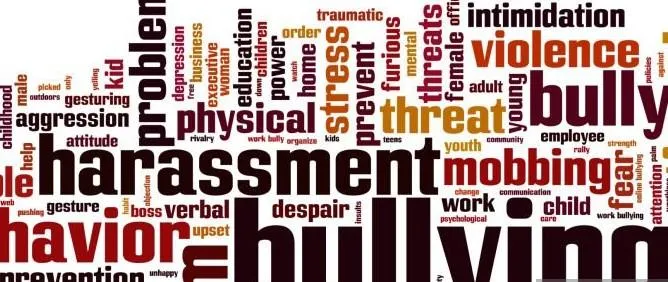
Bullying and Abuse: Precursors to Domestic Violence
What is the first thought you have when you hear or read the word “abuse?”
You’re thinking physical abuse, aren’t you?
Most people do. That’s because our criminal justice system only recognizes and punishes physical abuse, as in cases of domestic violence.
But what about the other harmful inflictions victims endure and suffer, like emotional, psychological, sexual, legal, and financial abuse? Why aren’t they recognized and punished? Is it because intentions are harder to prove or easier to excuse?
Regardless, it is up to us to be more aware of the types of abuses that affect a significant portion of our population, as abuse is often the precursor to domestic violence.
THE SHOCKING INCIDENCE OF ABUSE
According to the Center for Disease Control and Prevention, 1 in 3 women and 1 in 4 men globally endure abuse from a current or former intimate partner. That equates to 25-33% of our adult population!
If so many adults are involved in abusive relationships, what about the children?
Well, the most recent statistics from the CDC also indicate that 50% of all children in the United States alone are witness to or victim of at least 4 incidents of abuse or domestic violence before the age of 18.
*️⃣THAT’S HALF OF OUR CHILDREN! THAT SHOULD SHOCK EVERYONE!*️⃣
Add to that the prevalence of anxiety, depression, and suicide, it’s clear that the long-term effects of abuse and domestic violence deeply affect our current and future generations.
What’s worse is that we are so unfazed by bullying, abuse and domestic violence that victims often don’t even realize they are in an abusive situation at all!
This is why awareness is so important.
So, let’s break down the different types of abuses:
💔PHYSICAL- Intentionally inflicting harm or pain of any kind to a person’s body.
💔EMOTIONAL- Intentionally provoking ill feelings and distress in another person.
💔PSYCHOLOGICAL- Invoking doubt of another’s perceptions of reality and sense of themselves, using tactics like gas lighting, coercive control, and silent treatment, to the extent that the victim is overwhelmed with feelings of powerlessness and hopelessness.
💔SEXUAL- Engaging in any intimate act with a nonconsenting party, including violations which occur within a marital or any other committed relationship.
💔LEGAL- Threatening or pursuing legal action against someone in order to manipulate their behavior towards one’s own ends, such as falsely reporting abuse or mistreatment to authorities like Child Services.
💔FINANCIAL- Restricting or denying access to or refusing to provide funds in an effort to control or manipulate another.
Intention to cause harm to another is the key aspect to any abuse. Unfortunately, intention is as hard to prove as it is to detect, particularly when abusers are known to present as good, decent people; and are often well-liked and respected among their families and communities.
So, what can we do to support victims of abuse?
· ➡️Notice when someone is more withdrawn in social and group settings. Whether a neighbor, friend, co-worker or family member, they might appreciate an invitation into a friendly conversation and hopefully trust you enough to give some indication of what’s going on at home.
· ➡️Be cognizant of nonverbal indications of abuse. Strange behaviors like wearing long sleeves in warm weather, covering a portion of one’s face with hair, carrying one’s head lowly, and remaining silent in the presence of a dominant partner, are some potential indications that someone is covering up abusive behavior out of fear of exposure.
· ➡️Err on the side of caution by calling authorities to do a wellness check on children or adults who you think might be in an abusive situation.
· ➡️Step in when you witness verbal or physical assault. People often shy away from situations that they feel are not their concern. However, staying out of such situations is just as good as enabling them; and further impresses on the victim that nobody cares about them and that they likely deserve the mistreatment.
All in all, we need to take action against, instead of passively standing by, when we notice blatant mistreatment or even just something awry. Not only does this show the victim that the mistreatment is wrong, it also demonstrates to others that it’s okay to stand up for what is right. Otherwise, we are just perpetuating societal acceptance of bullying, abuse, and domestic violence for generations to come.
✨CHANGE BEGINS WITH YOU! And I think we can all agree that we need to change these shockingly high statistics, not just for our sake, but for the sake of future generations.
➡️For more on this topic, go to my Substack!
*️⃣To read about my lifelong experiences with abuse and domestic violence, check out my bestselling memoir trilogy:
💔GASPING FOR AIR: The Stranglehold of Narcissistic Abuse
💔CHOKING ON SHAME: The Scapegoat Child in a Narcissistic Family
and 💔RISING FROM THE ASHES: Breaking the Cycle of Narcissistic Abuse


